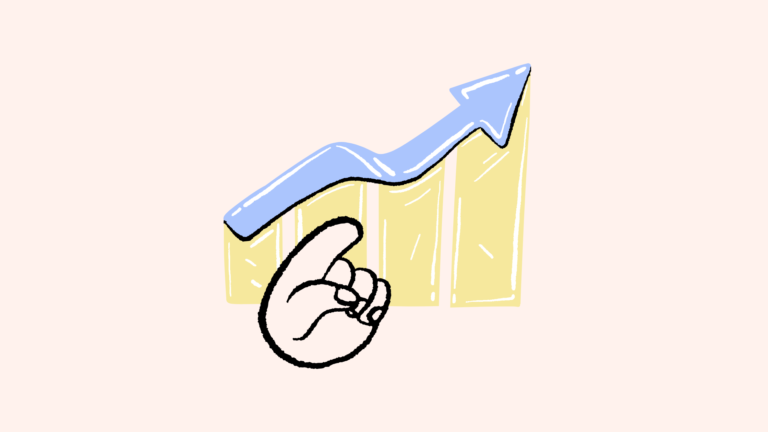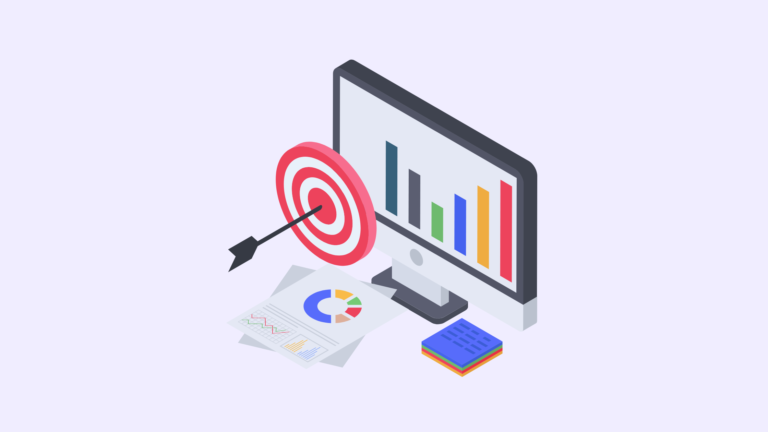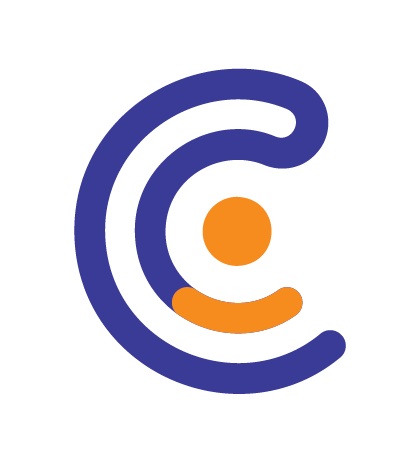In subscription-based business models like SaaS (Software as a Service), account churn is a metric that holds significant weight. It directly impacts your revenue, growth, and overall business health.
Account churn refers to the loss of customers over a specific period and is a crucial factor in determining the success of a business. If customers are constantly leaving, it means there’s a deeper issue with customer satisfaction, product quality, or customer service.
According to a study by ProfitWell, acquiring a new customer can cost 5-25 times more than retaining an existing one. This highlights the importance of managing churn rates effectively. In this blog, we’ll take an in-depth look at what account churn is, the reasons behind it, and practical strategies to reduce it
What is Account Churn?
Account churn, or customer churn, refers to the percentage of customers who discontinue using a service or product over a certain period of time. For subscription-based businesses, churn is often a measure of customer retention, which is the ability to keep customers satisfied enough to continue their subscriptions.
Churn Rate Formula:
The churn rate can be calculated with the following formula:
Churn Rate = (Customers Lost / Customers at the Start of the Period) × 100
For instance, if you start with 500 customers at the beginning of the month and lose 25 by the end, your churn rate would be 5%.
Why Does Account Churn Happen?
Understanding the underlying causes of account churn is essential for tackling it effectively. Here are the common reasons behind account churn, backed by data and research:
1. Poor Customer Experience
A significant driver of churn is poor customer experience. According to Zendesk, 62% of customers say they’ve stopped doing business with a brand due to poor customer service.
Issues like slow response times, complicated user interfaces, and inefficient customer support can drive customers away.
2. Lack of Engagement
Customer engagement is directly linked to retention. According to Invesp, businesses that focus on customer engagement can see 23% higher profitability.
Customers who don’t actively use your product or service often lose sight of its value, making them more likely to churn.
3. Better Competitor Offerings
With the fast-paced nature of industries like SaaS, it’s essential to continuously improve your offerings. Gartner estimates that 60-70% of customers who leave a service are lured away by better competitor offers, whether it’s enhanced features, lower pricing, or better support.
4. Price Increases
Price hikes can trigger churn, especially if customers don’t see enough value for the increased cost.
A McKinsey study revealed that 43% of customers would consider canceling a subscription if the price increased, especially if they believe they are not getting proportional value for the price.
5. Unmet Customer Expectations
A mismatch between customer expectations and actual experiences is another common reason for churn. If your product doesn’t meet the expectations set during marketing or onboarding, customers may leave.
Salesforce research states that 89% of customers will switch to a competitor if they have a poor experience.
6. Seasonal Use
In some cases, churn may be seasonal. Certain services or products may have a natural lifecycle where users only need them during specific seasons.
For example, tax-related services may experience churn after the tax season ends. Understanding your customer’s lifecycle helps in predicting and mitigating such churn.
How to Measure Account Churn
To effectively manage churn, businesses must track it using a combination of metrics. Understanding these can provide deeper insights into customer behavior and enable better decision-making.
1. Customer Lifetime Value (CLV)
CLV helps measure the total value a customer brings over the course of their relationship with your company. By combining CLV with churn rate, businesses can assess how much revenue they’re losing due to churn.
Formula for CLV:CLV=Average Revenue per Customer (ARPC)×Customer Lifetime\text{CLV} = \text{Average Revenue per Customer (ARPC)} \times \text{Customer Lifetime}CLV=Average Revenue per Customer (ARPC)×Customer Lifetime
For example, if the average revenue per customer per month is $100 and the average customer stays for 24 months, the CLV would be $2,400.
A high churn rate lowers CLV, which negatively affects profitability. According to a Harvard Business Review study, increasing customer retention by just 5% can increase profits by 25% to 95%.
2. Net Promoter Score (NPS)
NPS helps track customer loyalty and predict churn. By correlating NPS with churn, you can identify if poor customer satisfaction is a leading cause of churn.
Formula for NPS:NPS=% of Promoters−% of Detractors\text{NPS} = \% \text{ of Promoters} – \% \text{ of Detractors}NPS=% of Promoters−% of Detractors
An NPS score of 0 to 30 is typically average, while a score above 50 is considered excellent. Customers with low NPS scores are more likely to churn.
3. Retention Rate
Retention rate shows how many customers you’re keeping over a set period of time. It can be calculated using the formula:
Formula for Retention Rate:Retention Rate=(Customers at the End of the Period−New CustomersCustomers at the Start of the Period)×100\text{Retention Rate} = \left( \frac{\text{Customers at the End of the Period} – \text{New Customers}}{\text{Customers at the Start of the Period}} \right) \times 100Retention Rate=(Customers at the Start of the PeriodCustomers at the End of the Period−New Customers)×100
For example, if you started with 500 customers and ended with 450 customers, having gained 100 new ones, your retention rate would be 70%.
A higher retention rate means a lower churn rate. Gartner reports that companies with a 5% increase in customer retention can boost profits by 25% to 95%.
4. Customer Segmentation
Segmenting customers based on behavior or demographics helps identify groups that are more likely to churn. For example, customers who haven’t engaged with your product in months are more likely to churn.
Formula for Churn by Segment:Churn Rate (Segmented)=Number of Customers Lost in SegmentNumber of Customers in Segment×100\text{Churn Rate (Segmented)} = \frac{\text{Number of Customers Lost in Segment}}{\text{Number of Customers in Segment}} \times 100Churn Rate (Segmented)=Number of Customers in SegmentNumber of Customers Lost in Segment×100
By isolating churn rates for different segments, you can pinpoint which groups need more attention, allowing you to target retention strategies effectively.
5. Churn by Cohort
Cohort analysis tracks churn within specific groups (cohorts) of customers over time. This analysis can reveal trends and patterns that would otherwise be hidden in aggregate churn data.
For example, you might track customers who signed up in January and measure their churn in the following months. Cohort analysis helps you understand if new customers are more likely to churn compared to long-term customers.
Formula for Cohort Churn Rate:Cohort Churn Rate=Customers Lost in CohortCustomers in Cohort at Start×100\text{Cohort Churn Rate} = \frac{\text{Customers Lost in Cohort}}{\text{Customers in Cohort at Start}} \times 100Cohort Churn Rate=Customers in Cohort at StartCustomers Lost in Cohort×100
6. Customer Health Score
A customer health score is a predictive metric used to estimate the likelihood that a customer will churn. It’s based on factors like product usage, customer feedback, and service interactions.
Formula for Health Score: A typical formula can be a weighted average of multiple factors like usage frequency, support tickets, and NPS. For example:Health Score=0.4×Product Usage+0.3×Support Satisfaction+0.3×NPS Score\text{Health Score} = 0.4 \times \text{Product Usage} + 0.3 \times \text{Support Satisfaction} + 0.3 \times \text{NPS Score}Health Score=0.4×Product Usage+0.3×Support Satisfaction+0.3×NPS Score
A lower health score indicates higher risk of churn, allowing businesses to act proactively.
By combining these metrics, businesses can accurately track and reduce churn. Statista reports that 75% of businesses use at least one method of tracking customer retention, underscoring its importance in fostering customer loyalty and long-term profitability.
How to Reduce Account Churn
Reducing churn requires a multi-faceted approach. Let’s take a look at 10 proven strategies to reduce churn, each backed by research and best practices:
4.1 Improve Onboarding
A smooth and engaging onboarding experience is crucial for reducing churn. Research from Wyzowl shows that 86% of users who undergo a smooth onboarding process are more likely to stay engaged with a product long-term. Personalized onboarding via tutorials, product demos, and interactive guides can improve product adoption and reduce early churn.
4.2 Customer Engagement
Engagement is key to retention. Gallup reports that engaged customers are 23% more likely to make repeat purchases. Regular engagement through personalized emails, newsletters, and in-app messages keeps customers invested in your product.
4.3 Provide Exceptional Customer Support
A study by HubSpot found that 93% of customers are likely to make repeat purchases with companies that offer excellent customer service. Offering multiple touchpoints for customer support (live chat, email, phone, etc.) and quick response times can significantly reduce churn by making your customers feel valued and supported.
4.4 Listen to Customer Feedback
Collecting customer feedback through surveys, reviews, and direct interactions allows you to spot problems early. Invesp notes that businesses that regularly collect feedback can reduce churn by up to 15%. Analyzing feedback, particularly from dissatisfied customers, can help you identify pain points and fix them before customers decide to leave.
4.5 Create Customer Loyalty Programs
Rewarding loyal customers helps foster deeper engagement. According to Accenture, 77% of consumers say they are more likely to stay loyal to a brand that has a loyalty program. Offering exclusive rewards, discounts, and recognition for long-term customers can incentivize retention.
4.6 Flexible Pricing and Discounts
Offering flexible pricing options or targeted discounts can help you reduce churn, especially when customers feel the service is not worth the price increase. ProfitWell states that offering a discount to at-risk customers can reduce churn by as much as 20%.
4.7 Predictive Analytics and Early Warning Systems
Using predictive analytics to identify customers at risk of churning can significantly improve retention efforts. By analyzing patterns such as decreased usage, customer complaints, or payment issues, businesses can intervene early and prevent churn. Forrester reports that businesses that leverage predictive analytics see a reduction of churn by up to 30%.
4.8 Proactive Customer Success Management
Customer success teams are key to reducing churn. Their job is to ensure customers receive maximum value from your product. According to Gartner, 89% of companies with strong customer success teams report reduced churn. This proactive approach helps in addressing issues before they become major problems.
4.9 Personalization
Customers who feel that a product or service is tailored to their needs are less likely to churn. According to Epsilon, 80% of customers are more likely to purchase from a company that offers personalized experiences. Use customer data to personalize communication, offers, and product recommendations to keep them engaged.
4.10 Product Improvement
Continuous product innovation is essential for keeping your offering competitive. McKinsey reports that 90% of top-performing companies prioritize product development as a key strategy to retain customers. Regular product updates and feature releases show customers that you’re committed to providing ongoing value.
5. The Role of Customer Success Teams in Reducing Churn
Customer success teams can play a pivotal role in reducing churn. These teams proactively engage with customers, ensuring they’re getting value from the product. CSM (Customer Success Managers) monitor customer health scores, usage patterns, and customer feedback to ensure that no account is at risk of churning. By addressing concerns early, customer success teams can prevent churn before it happens.
6. The Bottom Line: Reducing Churn is a Continuous Effort
Reducing churn is not a one-off task but an ongoing, strategic effort. It requires constant monitoring, feedback collection, and refining of customer experiences. Implementing the right tools for customer engagement, offering personalized experiences, and continuously improving your product can keep customers happy and loyal.
Conclusion
Account churn is an inevitable challenge, but it’s also an opportunity for growth. By understanding why churn happens and taking proactive measures to address it, businesses can significantly improve customer retention and reduce churn. Whether it’s through engaging onboarding, customer success management, or leveraging predictive analytics, the key is to remain proactive and customer-centric. Implement these strategies to create long-lasting customer relationships and reduce churn effectively.




